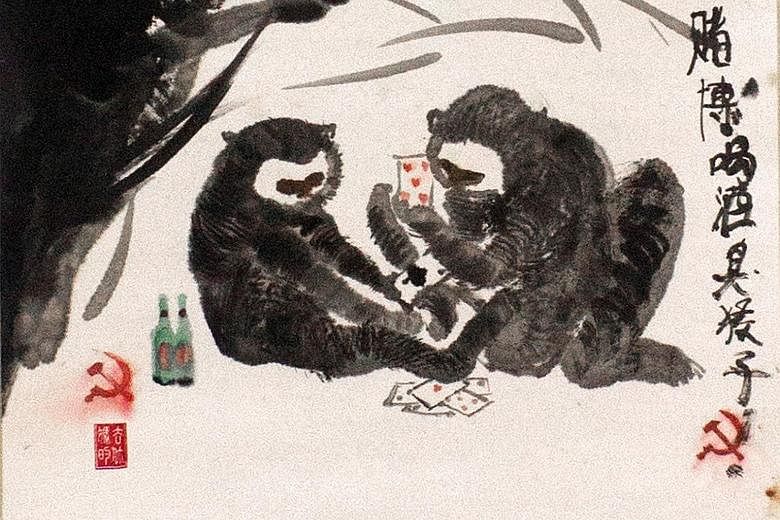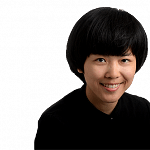The new exhibition at Chan Hampe Galleries by artists Samuel Chen and Justin Loke features ink paintings of gibbons. It is aptly named Monkey Business even though gibbons are not, taxonomically speaking, monkeys.
The title captures the mischievous behaviour of the anthropomorphic apes and it points to the show's playful satire on forgeries of works by renowned artist Chen Wen Hsi, whose evocative paintings of gibbons are highly prized.
Fakes of the pioneer Singapore artist's works have been rife in the market even before he died in 1991.
With the rising value of his art at auctions in recent years - his works sometimes sell for millions of dollars - collectors have sought out experts to tell the lookalikes from the originals.
-
VIEW IT / MONKEY BUSINESS
-
WHERE: Chan Hampe Galleries, 328 North Bridge Road, Raffles Hotel Arcade, 01-21
WHEN: Till Aug 14, 11am to 7pm, Tuesday to Sunday, closed on Monday and public holiday
ADMISSION: Free
Chen, 29, however, is not persuaded by some of the methods used to spot a forgery.
The fine arts graduate from Lasalle College of the Arts says: "I find it a little arbitrary, to say that if the strokes in a painting are not done a certain way, then the piece is not by Chen Wen Hsi. As someone who paints, I know that my strokes can change because of my mood and temperament."
He adds: "I have also seen a few of these Chen Wen Hsi fakes. I feel that they are actually very good works. I think that one should just enjoy looking at pictures for what they are and not who painted them."
Finding dark humour in all of this, he decided to parody forgeries of Chen Wen Hsi's paintings, depicting the gibbons as anthropomorphic and engaging in acts of violence and vice.
He did a few of such paintings in 2014 and showed them to his friend Loke, 36, who was tickled, but also saw more than wit in the works.
For the part-time art lecturer, who taught Chen when he was a diploma student at the Nanyang Academy of Fine Arts, the paintings raised questions about the value of art and how art is valued.
Loke says: "We started talking about what happens when art is seen as commodity, the issue of authentic and fake works, and how works are attributed when there is more than one artist involved."
These issues, which resonate throughout art history, including the development of artist studios that employ assistants to help make works, pushed the duo to take the idea further than "the initial urge to poke fun", says Loke, who is also a member of the art collective Vertical Submarine.
The two artists gave careful thought, in particular, to how they would extend their series of gibbon paintings and decided that to reinforce the complexity of authorship and attribution, they would not be the ones painting the works, nor would they name those who helped them.
They did, however, decide on how the gibbons should be depicted in the paintings - doing everyday human activities such as commuting and watching TV.
The exhibition comprises 13 paintings priced for sale from $1,500 to $3,000.
Chen says: "People tend to look at works and concentrate on just the painting, but we are creating a narrative and that is the art, not the ink on Chinese paper mounted on a scroll."


